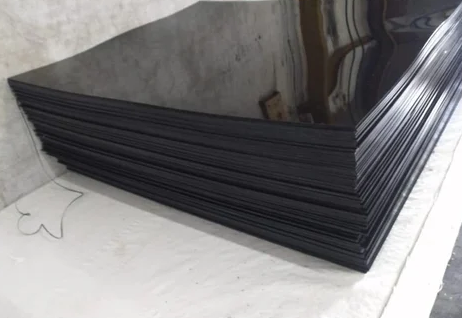Pioneering Water Conservation: The Dynamics of Pond Lining Sheets in India

Pond lining sheets stand as the unsung heroes in India’s agricultural and environmental landscape, providing a robust solution for water conservation and management. These impermeable sheets create a protective barrier, preventing seepage and ensuring efficient water storage. As we delve into the dynamics of pond lining sheets in India, we unveil a transformative force shaping sustainable water practices.
Addressing Water Scarcity Challenges
Agricultural Impact
India’s agrarian backbone relies heavily on water-intensive crops. Pond lining sheets act as a linchpin, curbing water wastage and optimizing irrigation practices. By preventing water seepage into the soil, these sheets ensure that every drop of water is utilized for crop nourishment, contributing to enhanced agricultural productivity.
Drought-Prone Regions
In regions prone to drought, the significance of pond lining sheets amplifies. These impermeable barriers create reliable water reservoirs, mitigating the impact of erratic rainfall patterns. Farmers in drought-affected areas can harness rainwater during the monsoons, storing it efficiently for sustained agricultural activities.
Factors Influencing Pond Lining Sheet Adoption
Geographical Variances
The adoption of pond lining sheets exhibits geographical nuances. Regions grappling with water scarcity or facing challenges in traditional water storage methods often witness higher adoption rates. Understanding these variances is crucial for manufacturers and policymakers in tailoring solutions to specific needs.
Agricultural Practices
The type of crops cultivated and prevailing agricultural practices influence the demand for pond lining sheets. Cash crops with longer growth cycles may necessitate more extensive water storage, driving the adoption of larger and more durable pond lining solutions.
Environmental Impact and Sustainability
Biodiversity Preservation
Pond lining sheets contribute to biodiversity preservation by preventing excessive water extraction from natural water bodies. This ensures that ecosystems dependent on these water sources remain undisturbed, fostering a delicate balance between agricultural needs and environmental conservation.
Sustainable Water Management
As sustainability takes center stage, pond lining sheets align with eco-friendly practices. The ability to efficiently store and manage water resources promotes sustainable agriculture, reducing the reliance on groundwater and promoting responsible water usage.
Technological Advancements in Pond Lining
Innovations in Material Science
Technological advancements have led to innovations in material science, introducing durable and cost-effective materials for pond lining sheets. High-density polyethylene (HDPE) and reinforced polyethylene are gaining prominence for their strength, longevity, and resistance to UV degradation.
Smart Pond Lining Solutions
The integration of smart technologies in pond lining solutions is on the horizon. Smart pond lining systems equipped with sensors for water quality monitoring, leak detection, and automated water release mechanisms offer a glimpse into the future of precision water management.
Government Initiatives and Policies
Subsidies and Incentives
Government initiatives play a pivotal role in the widespread adoption of pond lining sheets. Subsidies and incentives for farmers investing in water conservation measures, including pond lining, act as catalysts, driving adoption rates and fostering a culture of sustainable water management.
Awareness and Training Programs
Educational initiatives by government bodies create awareness about the benefits of pond lining sheets. Training programs equip farmers with the knowledge and skills needed for proper installation and maintenance, ensuring the longevity and effectiveness of these water conservation solutions.
The Future Landscape of Pond Lining Sheets in India
Scaling Up Adoption
As India grapples with the challenges of water scarcity and climate change, the future holds immense potential for the increased adoption of pond lining sheets. Scaling up adoption through awareness campaigns, technological innovations, and policy support will be pivotal in creating a water-resilient agricultural landscape.
Integration with Smart Agriculture Practices
The synergy between pond lining sheets and smart agriculture practices is a promising avenue. Integrating these technologies can revolutionize water management, providing farmers with real-time data and insights for informed decision-making.
Economic Impact on Agriculture
Enhanced Crop Yield and Quality
The economic impact of pond lining sheets on agriculture is substantial. By providing a consistent and controlled water supply, these sheets contribute to enhanced crop yield and improved crop quality. This, in turn, translates into increased income for farmers, creating a positive economic ripple effect.
Risk Mitigation in Unpredictable Climates
In regions where climate unpredictability is a constant challenge, pond lining sheets serve as a risk mitigation tool. Farmers can plan their crops more effectively, knowing that they have a reliable water source despite erratic weather patterns. This resilience contributes to the stability of the agricultural economy.
Social Implications and Community Development
Community-Driven Water Management
The adoption of pond lining sheets often transcends individual farm practices, leading to community-driven water management initiatives. Shared water reservoirs, lined with impermeable sheets, become a collective asset for villages, fostering a sense of community responsibility and cooperation.
Empowering Women in Agriculture
In many rural communities, women play a significant role in agricultural activities. The efficient use of water resources facilitated by pond lining sheets reduces the labor burden on women who traditionally carry the responsibility of fetching water. This empowerment can lead to broader societal changes.
Challenges and Innovations
Affordability and Access
One of the persistent challenges is the affordability and accessibility of pond lining sheets, especially for small-scale farmers. Innovations in financing models, government-backed schemes, and collaborations with non-profit organizations are avenues to address these challenges.
Advancements in Installation Techniques
To maximize the effectiveness of pond lining sheets, advancements in installation techniques are crucial. Training programs and workshops can educate farmers on best practices, ensuring that the sheets are installed correctly for optimal water retention.
Conclusion: Nurturing Sustainable Water Practices
In the realm of water conservation, pond lining sheets emerge as beacons of hope, offering pragmatic solutions to India’s agricultural challenges. As the nation marches towards sustainable water practices, the widespread adoption of pond lining sheets becomes not just a choice but a necessity. Through continued innovation, awareness, and collaborative efforts, these impermeable sheets will continue to shape a future where water is cherished, conserved, and optimally utilized for the prosperity of agricultural communities and the environment.





